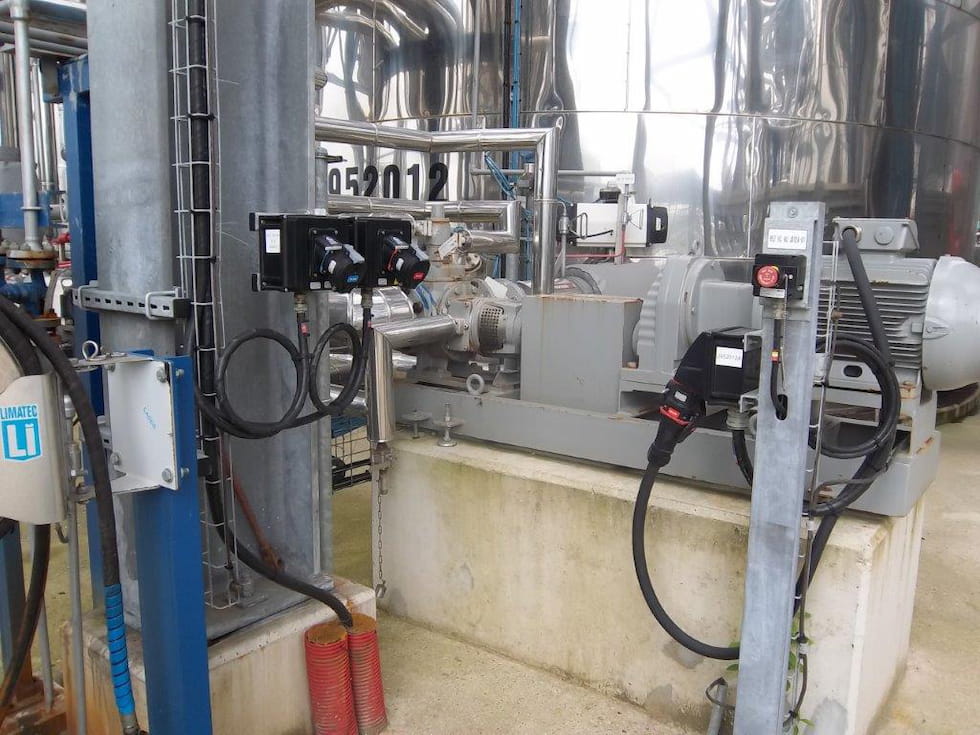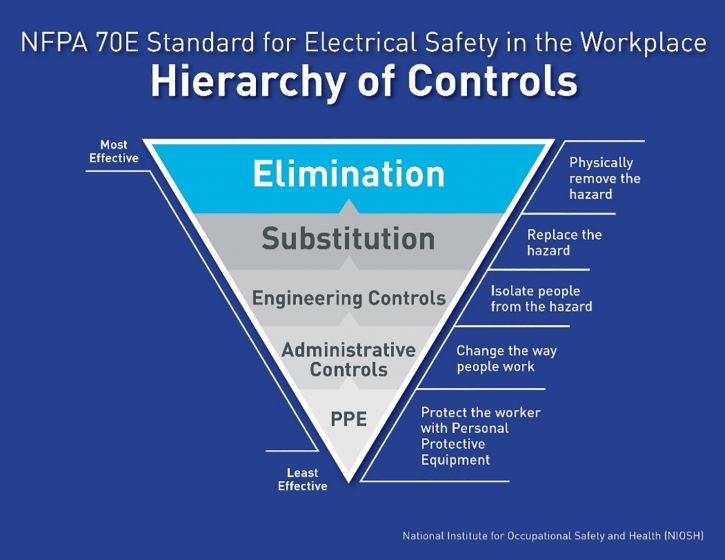
The chemical industry, which converts raw materials into more than 70,000 different products, has many processes that are driven by motors and machinery, all of which are powered by electricity. This industry, like most processing industries, relies heavily on electrically qualified workers to keep the equipment and facilities running and production on schedule.
For their well-being and because of the important role that these workers play, it is imperative to keep them electrically safe. This should include the establishment and regularly scheduled review/audit of the electrical safety program, conducted by environmental health and safety (EHS) audits working with each processing facility’s local electrical reliability professionals.

Lockout/Tagout & Energy Control
Procedures to safely lock out and tag out equipment should be standard practice, yet lockout/tagout (LOTO) was the fourth most commonly cited Occupational Safety and Health Administration (OSHA) violation with more than 2,600 citations in 2019.
Sadly, it has made the “Top 10 Most Cited Violations” list annually for at least 10 years. Common LOTO violations involved unqualified workers working within the limited and restricted approach
boundaries around bare, live conductors; workers not properly implementing personal protective equipment (PPE); or employers of workers not inspecting new and modified equipment. But the most cited LOTO violation involves energy control procedures.
Due to the large number of maintenance tasks requiring safe LOTO within the chemical processing and refining industry, a close look at the LOTO procedures surrounding the control of hazardous energy by EHS professionals and electrical reliability professionals is warranted.
Historically, health and safety professionals had little knowledge about electrical safety and would rely on their electricians and electrically qualified workers to implement electrical safety programs. However, it is now common for EHS professionals to prioritize electrical safety and familiarize themselves with the proper control of hazardous electrical energy.
Controlling hazardous electrical energy not only protects workers from arc flash injuries and shock hazards, but it also protects workers from sustaining injuries due to equipment being accidentally reenergized during a maintenance procedure.
NFPA 70E & the Hierarchy of Controls
The NFPA 70E Standard for Electrical Safety in the Workplace is published by the National Fire Protection Association (NFPA). It is considered the industry standard for properly implementing an electrical safety program, including procedures for proper electrical LOTO equipment, controlling hazardous energy, as well as detailed information around the intricacies that surround proper PPE selection.
The NFPA 70E aligns closely with the Code of Federal Regulations (CFR) that OSHA uses to promote safe working conditions, and it is used as a benchmark for safe electrical work practices
throughout all industries. The NFPA 70E is an ideal resource for EHS professionals
to use to become aware of proper electrical safety-related work practices and procedures.
One of the most important keys within the standard is the hierarchy of controls. This hazard control plan illustrates to employers the steps that can be taken to remove the risks of electrical injuries occurring in the workplace due to electrical safety hazards.
Prevention Through Design
The National Institute for Occupational Safety and Health (NIOSH) is leading a national initiative known as prevention through design (PtD) to prevent and reduce occupational injuries, fatalities and illness.
The hierarchy of controls is designed as a PtD strategy and is illustrated as an inverted triangle, with the most effective means of control at the top and the least effective at the bottom. Following this hierarchy normally leads to the implementation of inherently safer systems, where the risk of illness, injury or death will be substantially reduced.
The preferred method of electrical hazard prevention within the workplace is by completely eliminating the hazards, which is possible with some types of specialized electrical equipment. It is important to understand that procedures and PPE are the worker’s last line of defense against electrical hazards because there is always an element of human error to be expected when following procedures.
Mitigate Hazards
Not just anyone should be allowed to maintain machinery, or work around electrical systems and wires. The NFPA 70E unequivocally states that in order for electrical programs to be effective, electrically qualified workers are required (Article 110.2). Additionally, any time workers become exposed to bare, live conductors over 50 volts (V), electrically qualified workers are required (Article 130). These workers should be trained and should possess the skills and techniques to be able to identify electrical conductors and circuit parts of electrical equipment and determine the nominal voltage of exposed energized electrical conductors and circuit parts.
They should have detailed knowledge of limited approach boundaries and restricted approach boundaries around bare live conductors, as well as the knowledge of how to calculate the boundaries. Electrically qualified workers should be able to establish the likelihood of arc flash occurring during electrical procedures and be able to select appropriate PPE and test instruments (Articles 110.2, 130.4 (D)(a), 130.4 (D)(b)). They should also be aware of procedures outlined in Article 120.5 to establish electrically safe work conditions.
Creating Electrically Safe Work Conditions
Interestingly, the proper process for establishing electrically safe work conditions is the most frequent violation of LOTO procedure. It is common for workers, especially nonqualified electrical workers, to actuate a traditional disconnect switch and blindly trust that all blades of the disconnecting device have opened, deenergizing the device.
This is dangerous. Although the disconnect switch handle moves and makes a sound as though it has fully opened all phases of the disconnecting device, one phase can remain engaged. When the worker begins maintenance, this leaves him/her vulnerable to arc flash and electrical shock and susceptible to the equipment starting unexpectedly.
It is for this reason that the NFPA 70E Standard clearly states that disconnecting devices should be opened, and workers should establish visual verification of deenergization before trusting that the energy has been safely disconnected. Machine and system maintenance also play an important factor, as traditional disconnecting devices can fail due to manufacturing faults, corrosion, and even because of insects or other small animals obstructing the full electrical opening of
the device.
Opening a traditional disconnecting device to visually verify that all phases are opened comes with its own dangers, as it requires the worker to become exposed to bare, live conductors. This is why NFPA 70E Article 130 requires an electrically qualified worker to perform the operation. Additionally, the electrically qualified worker should implement proper PPE as per Article 130.
The only way to get around this is to use a disconnecting device where the worker can visually verify that all blades of the disconnecting device have disengaged without becoming exposed to bare, live conductors. Provided a worker is only operating a switch with the door closed, the operation is considered a normal operation.
Qualified workers and PPE are not required for a normal operation because an arc flash event is unlikely to occur, as per Table 130.5(C) of the NFPA 70E Standard.
Bottom line: The safety of electrically qualified workers can be enhanced through training and adherence to the NFPA 70 Standard and electrically safe work practices. Becoming familiar with the intricacies of the NFPA 70E Standard, including LOTO procedures, is vital for chemical sites to implement an effective LOTO and electrical safety program.

